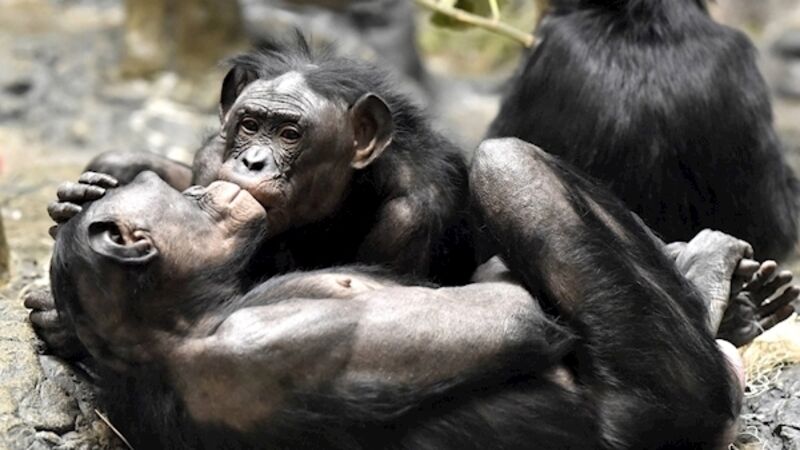Appliance of Science: Do animals fall in love?

Love is in the air this week as many of us prepare to celebrate our loved ones with romantic gestures. But does this ever happen among animals too? They may not know it is Valentine’s day but do animals love in the ways that we do?
Many scientists argue that the answer lies in how we define love. The definition of romantic love includes the development of a strong emotional bond, an attachment. There are numerous reports of animals forming strong attachments with each other. Elephants and bonobos are just two examples of this. They live in large family groups and express great commitment to others. Both types of animals are known to be very tactile and affectionate among their families. Bonobos are even famous for that trait we specifically associate with human romance… kissing.
Other emotions can indirectly express love; two particular examples would be empathy and grief. These emotions have been observed in a number of animal species. Empathy has been suggested as the emotion behind reports of humpback whales rescuing seals from attacking killer whales, by carrying them away on their backs. Elephants exhibit grief when a family member dies. In fact, it is not just the immediate family members that morn, other family groups will visit the body too.
While these are just a few examples of how other animals can love, there are other species that we probably wouldn’t classify as loving and we certainly wouldn’t want to spend Valentine’s day with them.
Love in the world of most species of spiders certainly doesn’t fit in with what we describe as romantic. We probably wouldn’t define it as love at all. Indeed it can be quite a tricky affair. There are many species where the females are much larger than the males, and pose a genuine threat to their lives. One extreme example of this is can be found in redback spider (Latrodectus hasselti). The tiny male makes the ultimate sacrifice as, once mating has begun he literally perform a somersault and present his abdomen to the much larger female. Her response is to start eating him. He does this to buy himself time in the hope that he will at least make a genetic contribution to the next generation. When mating is complete the female clasps him in tightly to her, in one last embrace, before eating the rest of her poor mate.
This Valentine’s day, many people will be exchanging cards or gifts as a token of their affection. We may give flowers or chocolates or even cook a favourite meal but these gestures pale compared to some other animals.
Take the Katydids as an example. These insects are related to crickets and grasshoppers but the males of the species are slow and cautious when it comes to finding a mate; and with good reason as a male katydid, once he has chosen a female, will present her with a little nuptial gift. This gift comes in the form of a large food parcel, to provide nutrition for the female and, sometimes, her offspring. For this purpose, the parcels need to be large and that is a costly investment for the males. The nuptial gifts they produce (from their own bodies) can be up to 30 percent of their body mass, hence their pickiness. That’s a lot harder than picking up a box of chocolates from the corner shop, but it’s not exactly what I’d call love.











